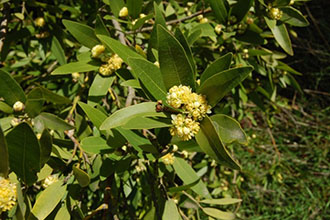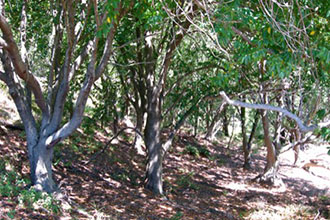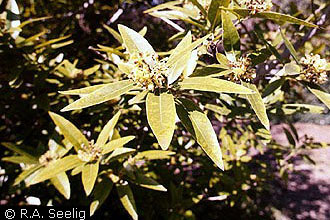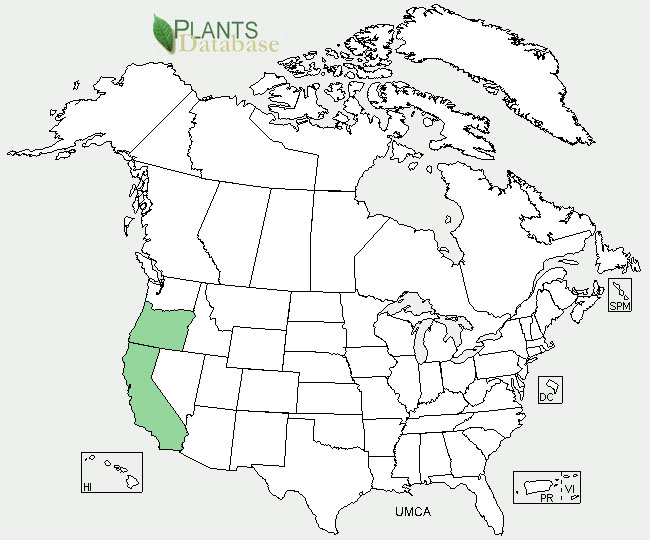Taxonomy: Kingdom - Plantae (plants). Subkingdom - Tracheobionta (vascular plants). Superdivision - Spermatophyta (seed plants). Division - Magnoliophyta (flowering plants). Class - Magnoliopsida (dicotyledons). Subclass - Magnoliidae. Order - Laurales. Family - Lauraceae (laurel family). Genus - Umbellularia (Nees) Nutt. (california laurel). Species - Umbellularia californica (Hook. & Arn.) Nutt. (california laurel).
Ecology: California laurel is a perennial, evergreen tree or shrub that is native to California and southern Oregon. The trees have many slender erect branches and a dense crown that can be rounded to pyramidal in shape. The height is variable depending on conditions and the plants can grow from 3 to 45 meters tall. The smallest forms are found under dry conditions and they reach their greatest size on deep alluvial soils near rivers. The greenish to reddish brown bark, which is thin and smooth on young trees, begins to peel and shed as the trees mature. The alternately arranged leaves are oblong to lance-shaped (2.5 to 11 cm long and 1.5 to 3 cm wide). Leaves are glossy dark yellow-green, thick, and leathery. When crushed, the leaves give off a strong peppery menthol-like odor, which is the reason the early European settlers gave the tree the name pepperwood.



